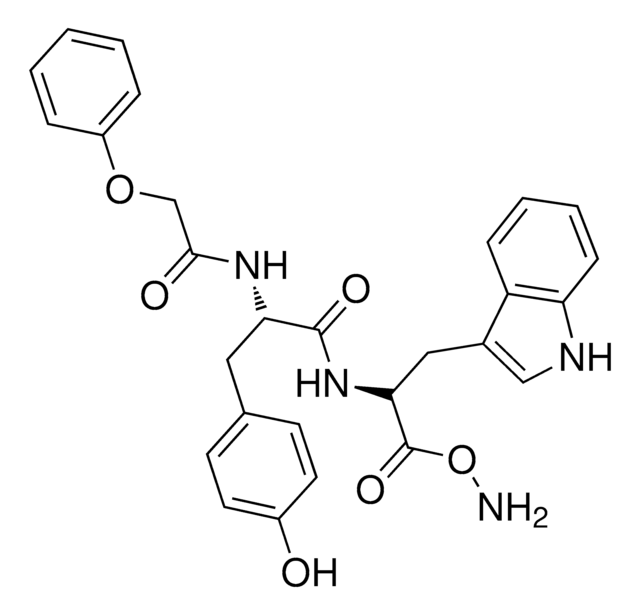SML0136
TGN-020
≥98% (HPLC)
Synonim(y):
2-(Nicotinamide)-1,3,4-thiadiazole, N-(1,3,4-Thiadiazol-2-yl)-3-pyridinecarboxamide, N-(1,3,4-Thiadiazol-2-yl)pyridine-3-carboxamide, N-(1,3,4-Thiadiazolyl)-m-nicotinamide
About This Item
Polecane produkty
Próba
≥98% (HPLC)
Postać
powder
kolor
white to tan
rozpuszczalność
DMSO: ≥8 mg/mL
temp. przechowywania
room temp
ciąg SMILES
O=C(Nc1nncs1)c2cccnc2
InChI
1S/C8H6N4OS/c13-7(6-2-1-3-9-4-6)11-8-12-10-5-14-8/h1-5H,(H,11,12,13)
Klucz InChI
AGEGZHOPKZFKBP-UHFFFAOYSA-N
Zastosowanie
Działania biochem./fizjol.
Hasło ostrzegawcze
Warning
Zwroty wskazujące rodzaj zagrożenia
Zwroty wskazujące środki ostrożności
Klasyfikacja zagrożeń
Acute Tox. 4 Oral
Kod klasy składowania
11 - Combustible Solids
Klasa zagrożenia wodnego (WGK)
WGK 3
Temperatura zapłonu (°F)
Not applicable
Temperatura zapłonu (°C)
Not applicable
Certyfikaty analizy (CoA)
Poszukaj Certyfikaty analizy (CoA), wpisując numer partii/serii produktów. Numery serii i partii można znaleźć na etykiecie produktu po słowach „seria” lub „partia”.
Masz już ten produkt?
Dokumenty związane z niedawno zakupionymi produktami zostały zamieszczone w Bibliotece dokumentów.
Nasz zespół naukowców ma doświadczenie we wszystkich obszarach badań, w tym w naukach przyrodniczych, materiałoznawstwie, syntezie chemicznej, chromatografii, analityce i wielu innych dziedzinach.
Skontaktuj się z zespołem ds. pomocy technicznej








